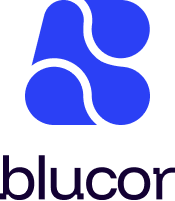- Blucor's Newsletter
- Posts
- How Skanska Solved Its Hiring Bottlenecks with AI Recruiting
How Skanska Solved Its Hiring Bottlenecks with AI Recruiting

Manual screening once slowed every project start for Skanska USA, one of the country’s largest construction and development firms. Recruiters spent hours sorting through hundreds of applications for each project, often missing qualified workers who could have been on-site within days. Facing a skilled labor shortage and rising project delays, Skanska turned to AI automation to rebuild its hiring process from the ground up.
TL;DR:
Skanska used AI recruiting tools to automate screening and scheduling, cutting time-to-hire by more than half and improving candidate engagement across multiple job sites.

The Hiring Strain in Construction
The construction industry faces one of the toughest labor markets in decades. According to the Associated Builders and Contractors (ABC), the U.S. construction sector needs to attract over 500,000 additional workers in 2025 to meet demand. Recruiters are under pressure to fill roles quickly while maintaining compliance and safety standards. Manual screening and scheduling simply can’t keep up with that scale.
Company Background
Skanska USA manages large-scale infrastructure and commercial projects across the country, employing more than 7,000 workers. Each project requires a mix of skilled trades, site supervisors, and safety personnel. Recruiters often handle hundreds of applicants per role, many of whom lack the required certifications or experience. Every delay in hiring means a delay in project delivery—and lost revenue.
The Challenge
Skanska’s HR team identified three major bottlenecks:
Volume overload: Thousands of applicants per quarter, many unqualified.
Manual screening: Recruiters spent 15–20 minutes per phone screen, creating weeks of backlog.
Scheduling chaos: Coordinating interviews across multiple time zones and job sites delayed decisions.
The result was a time-to-hire averaging 24 days, well above the industry benchmark of 14 days for skilled trades (source: iCIMS 2024 Workforce Report). Candidate drop-off rates climbed as applicants waited days for callbacks.
The Turning Point: AI Recruiting in Action
In 2024, Skanska partnered with HireVue, an AI-powered recruiting platform, to automate early screening and scheduling. The system used structured video and voice interviews to assess skills, verify certifications, and rank candidates automatically. Recruiters trained the AI on job-specific criteria, and it handled the rest—screening thousands of applicants in hours instead of weeks.
According to HireVue’s case study on Skanska (2024), the company reduced manual screening time by over 60% and improved candidate response rates by 45%. Recruiters could now focus on final interviews and offer management instead of repetitive phone calls.
Results and Impact
The transformation was measurable:
Time-to-hire cut from 24 to 10 days
Recruiter workload reduced by 65%
Candidate satisfaction up 40%, based on post-interview surveys
Faster project staffing, reducing idle time on job sites
The AI system also supported multiple languages, helping Skanska reach a broader labor pool and improve diversity across its workforce.
Key Takeaways for Construction Leaders
Automate early screening. Let AI handle repetitive qualification checks so recruiters can focus on fit and safety culture.
Integrate with existing systems. Seamless ATS updates prevent data silos and missed follow-ups.
Prioritize candidate experience. A fast, conversational process keeps skilled workers engaged.
Track measurable outcomes. Monitor time-to-hire, cost-per-hire, and satisfaction to prove ROI.
Conclusion
AI recruiting turned Skanska’s hiring bottleneck into a competitive advantage. By automating screening and scheduling, the company built a faster, fairer, and more scalable workforce pipeline. For construction firms facing similar labor shortages, AI automation is no longer experimental—it’s the foundation for sustainable workforce transformation.
Sources:
Associated Builders and Contractors, 2025 Construction Workforce Shortage Report
iCIMS, 2024 Workforce Report
HireVue, Case Study: Skanska USA Accelerates Hiring with AI Screening